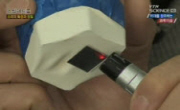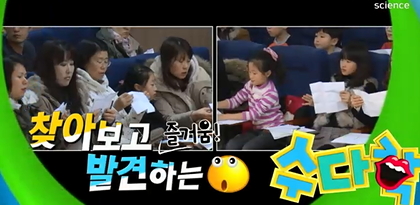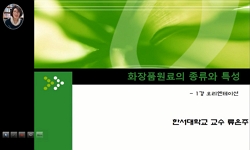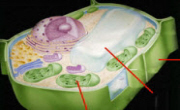Songseol Jo, Maeng-bu (1254-1322), the descendant of the found of the Song dynasty Jo Gwang Yun, is a calligrapher who dominated the Yuan dynasty. He is a leading calligrapher representing not only the Yuan dynasty but also the Chinese calligraphy his...
http://chineseinput.net/에서 pinyin(병음)방식으로 중국어를 변환할 수 있습니다.
변환된 중국어를 복사하여 사용하시면 됩니다.
- 中文 을 입력하시려면 zhongwen을 입력하시고 space를누르시면됩니다.
- 北京 을 입력하시려면 beijing을 입력하시고 space를 누르시면 됩니다.
https://www.riss.kr/link?id=T11205688
- 저자
-
발행사항
서울: 경기대학교, 2006
-
학위논문사항
학위논문(석사)-- 경기대학교 전통예술대학원: 서화예술학과 서예전공 2007. 8
-
발행연도
2006
-
작성언어
한국어
- 주제어
-
발행국(도시)
서울
-
형태사항
v, 86 p: 삽화; 26cm.
-
일반주기명
지도교수:박영진
- 소장기관
-
0
상세조회 -
0
다운로드
부가정보
다국어 초록 (Multilingual Abstract)
Songseol Jo, Maeng-bu (1254-1322), the descendant of the found of the Song dynasty Jo Gwang Yun, is a calligrapher who dominated the Yuan dynasty. He is a leading calligrapher representing not only the Yuan dynasty but also the Chinese calligraphy history. He also demonstrated his remarkable ability as a politician, scholar, musician, poet, and economist. Therefore, it is not exaggerating to say that he is a versatile and outstanding artist who represents the Chinese intellectuals in the Yuan dynasty.
Though he belonged to the royal family of the Song Dynasty, he entered government service in the Yuan dynasty and got promoted up to Hanrimhaksaseungji. He lived relatively peaceful life in terms of both career and personal life. During his life, he wrote lots of works including quite a few poems and essays in 『Songseoljemunjib』. He also advocated the theory that calligraphy has the same origin as painting and espoused the idea that poetry, calligraphy and painting have the same origin. In addition, he proposed revivalism to pay respect to Wang-Hui-ji's calligraphy works. Overall, he is a calligrapher who accomplished great achievements in the calligraphy history.
Jo, Maeng-bu studied every calligrapher's works throughout the entire history and created Songseolche whose style is elegant and beautiful. The influence of Songseolche reached beyond the Yuan dynasty and into the following dynasties. It also affected foreign counties. Korea was also placed under its influence. It dominated Korean calligraphy from the late Goryeo dynasty to the mid Joseon dynasty. Those who were influenced by Songseolche included Lee Am, Lee, Je-Hyeon, Choe, Heung-hyo, and Lee Kang in the Goryeo dynasty and prince Anpyeong and his scholar friends, and lots of other calligraphers in the Joseon dynasty.
Besides, Jiphyeonjeon scholars and other general calligraphers and scholars followed Jo, Maeng-bu's Songseolche style. On the other hand, a Joseon dynasty king ordered to collect Jo, Maeng-bu's calligraphy works and to publish them in a calligraphy handbook. Besides, as those who involved in book printing also followed Songseolche style, printed books were mostly written in Songseolche style.
In the second year of King Munjong (1452), with regard to the matter of modifying cast of Gyeongja-ja prince Anpyeong ordered Lee Yong to write characters for printing and have them casted in copper. This is how Imsinja was created. As King Sejo ascended to the thrown, Imsinja was modified. He ordered to Kang, Hhi-an who was good at Songseolche style calligraphy to write characters. This became Eulhaeja which represents Korean printing types along with Gabinja. Eulhaeja had been used in printing books until the Imjin war. Especially, it was often employed in printing Buddhist books.
Eulhaeja contributed a lot to spreading Songseolche style in the early Joseon dynasty. The reason Songseolche could gain huge popularity is largely because lots of books at that time were printed in Songseolche style.
This study examined leading calligrapher in the Yuan dynasty, Songseol Jo, Maeng-bu's works, focusing on his calligraphy works. It explored the characteristics of his calligraphy and looked into how his style of calligraphy was adopted and become popular. In addition, through people who contributed to the settlement of Songseolche, it discussed how popular it was in the Joseon dynasty. Furthermore, it also analyzed Songseolche style used in printed types and examined various kinds of printing types and their characteristics.
국문 초록 (Abstract)
송설 조맹부는(1254-13220) 송 태조 조광윤의 후예로서, 원대에 활동한 서예가인데 원조뿐만 아니라 전중국서예사에서 손꼽히는 대가이다. 또한 그는 정치가, 학자, 음악가, 시인, 경제가로서도...
송설 조맹부는(1254-13220) 송 태조 조광윤의 후예로서, 원대에 활동한 서예가인데 원조뿐만 아니라 전중국서예사에서 손꼽히는 대가이다. 또한 그는 정치가, 학자, 음악가, 시인, 경제가로서도 뛰어난 재능을 발휘한 만능의 대예술가 이었으며, 광범위한 분야에서 원대의 한인지성을 대표 한다고 해도 과언이 아닐 것이다.
그는 송종실 후예지만 원조에 출사하여 한림학사 승지까지 오름으로써 비교적 순탄한 관역과 일생을 보내는 동안 많은 저술을 내었고 '송설제문집'에 수록된 수많은 시와 문장을 남겼다. 한편 서화동원론을 제창하고 시.서.화일체의 합일사상을 표방하고 왕희지 글씨를 조종으로 하는 복고주의를 주창하였으며 서예사에 큰 족적을 남겼다.
이와 같이 조맹부는 모든 시대의 모든 서예가들의 글씨를 연구하고 종합하여 필법이 연미하고 결체가 순고하여, 바르고 아름다운 글씨, 즉 송설체를 만들었으며 그 송설체가 원대 뿐만 아니라 후대에까지 크게 영향을 미치었다.
우리나라에서도 고려말과 조선조 중엽까지 유행 하였으니, 고려 때의 이암, 이세현, 최흥효, 이강 등과 조선조에는 안평대군과 교류하던 문사들과 크고 작은 서예가들이 그의 송설체의 영향을 받았다.
또한 집현전학사들을 중심으로한 시문, 묵객들이 거의 조맹부체를 따라?㎞?, 왕명으로 조맹부의 진적을 수집, 인행하여 널리 교본으로 삼았는데, 활자본을 쓴 사람들 또한 조맹부체를 즐겨 ?㎢? 관꼐로 활자도 조맹부체가 지배적 이었다.
문종2년(1452) 경자자를 개주할 때 안평대군 이용에게 명하여 글시를 써서 동으로 주자하였는데, 이것이 임신자이다. 세조가 즉위(1455)하면서다시 임신자를 개주하였고, 역시 조맹부체에 능한 강희안에게 명하여 글씨를 쓰게 하였는데, 이것이 을해자이다. 을해자는 우리나라 주자사상 갑인자와 함께 쌍벽을 이루는 대표적인 활자로서 임진란이 있을 때 까지 보주되면서 서적인쇄에 사용되어 왔으며, 특히 불교 서적의 인출에 많이 이용되어 왔다.
이는 조선초 서체보급의 역할에도 많은 기여를 하였으며 이러한 조맹부체의 유행은 인쇄활자의 서체에 있어서도 영향이 컸고, 이점은 조맹부체를 대중화하는데 절대적인 역할을 하였다.
이 논고는 원대 제일의 서예가인 송설 조맹부의 서예를 중심으로 그의 서예세계를 고찰하고 조맹부의 서체의 특징과, 수용, 성행과정을 파악하고 송설체를 정착시킨 인물들을 통해 송설체가 당대에 차지하고 있던 비중과 조맹부 서체가 조선시대 판본에 사용된 서체를 분석하고 판본의 종류와 특징을 살펴 규명해보았다.
목차 (Table of Contents)
- 국문초록
- 표목차
- Ⅰ. 서론
- 국문초록
- 표목차
- Ⅰ. 서론
- Ⅱ. 판본의 종류와 특징
- 1. 목판본
- 2. 활자본
- 1).목활자본
- 2).금속활자본
- 3).도활자본
- 4).포활자본
- Ⅲ. 판본에 사용된 유행서체와 조맹부서체
- 1. 목판본
- 2. 목활자본
- 3.금속활자본
- Ⅳ. 조맹부 서체의 특징, 수용, 유행
- 1. 조맹부서체의 특징
- 2. 조맹부서체의 수용
- 3. 조맹부서체의 유행
- Ⅴ. 결론
- 목활자와 금속활자의 연표
- 참고문헌
- 도판
- ABSTRACT












